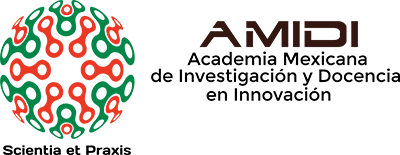Regional Wealth with Biodiversity and Socioeconomic Marginality
DOI:
https://doi.org/10.55965/setp.1.01.a2Keywords:
Regional Wealth, Biodiversity, Sopcioeconomic MarginalityAbstract
Purpose. Mexico is a country with a richness in biodiversity and a high level of Natural Capital throughout the territory; however, the highest concentration is distributed in regions where a population with high levels of marginalization and socioeconomic poverty lives.
Methodhology. The characteristics of genetic resources and their sustainable use in conservation require the establishment of cross-cutting strategies in the design and implementation of comprehensive public policies focused on society and the diversity of territories and social needs.
Findings and originality. This reality highlights the relevance of identifying the main elements that characterize the Natural Capital in the environments, mainly in the South Pacific region due to its social and cultural importance. The originality of this document is the analysis of the socioeconomic and marginalization conditions of the population with the most incredible wealth in biodiversity and establish strategies that facilitate the conservation of genetic resources in tune with sustainable social and economic growth in the medium and long term.
Downloads
References
CBD Convention on Biological Diversity Subsidiary Body on Scientific Technical and Technological Advice. (1997). Recommendations for a Core Set of Indicators of Biological Diversity. UNEP/CBD/SBSTTA/3/Inf.13.
Comisión Nacional para el Conocimiento y Uso de la Biodiversidad (CONABIO). (2020a). Especies endémicas. Biodiversidad Mexicana. https://www.biodiversidad.gob.mx/especies/endemicas/endemicas
Comisión Nacional para el Conocimiento y Uso de la Biodiversidad (CONABIO). (2020b). Índice de Capital Natural. Biodiversidad Mexicana. https://www.biodiversidad.gob.mx/pais/indice_capnat.html
Comisión Nacional para el Conocimiento y Uso de la Biodiversidad (CONABIO). (2020c). Índice de Capital Natural (NCI) por municipios. Portal de Geoinformación. Sistema Nacional de Información Sobre Biodiversidad. http://www.conabio.gob.mx/informacion/gis/
Consejo Nacional de Evaluación de la Política de Desarrollo Social (CONEVAL). (2018). Pobreza 2018. Entidades Federativas. https://www.coneval.org.mx/coordinacion/entidades/Puebla/Paginas/Pobreza_2018.aspx
Czúcz, B., Molnár, Z., Horváth, F., Nagy, G. G., Botta-Dukát, Z., & Török, K. (2012). Using the natural capital index framework as a scalable aggregation methodology for regional biodiversity indicators. Journal for Nature Conservation, 20(3), 144–152. DOI: https://doi.org/10.1016/j.jnc.2011.11.002
Ten Brink, B. J. E. (2000). Biodiversity indicators for the OECD Environmental Outlook and Strategy.
Ten Brink, B. J. E., Van Hinsberg, A., De Heer, M., de Knegt, B., Knol, O. M., Ligtvoet, W., Rosenboom, R., & Reijnen, M. (2003). Technisch ontwerp Natuurwaarde 1.0 en toepassing in Natuurverkenning 2.
Downloads
Published
How to Cite
Issue
Section
License
Copyright (c) 2022 Ariel Vázquez-Elorza

This work is licensed under a Creative Commons Attribution-NonCommercial 4.0 International License.











